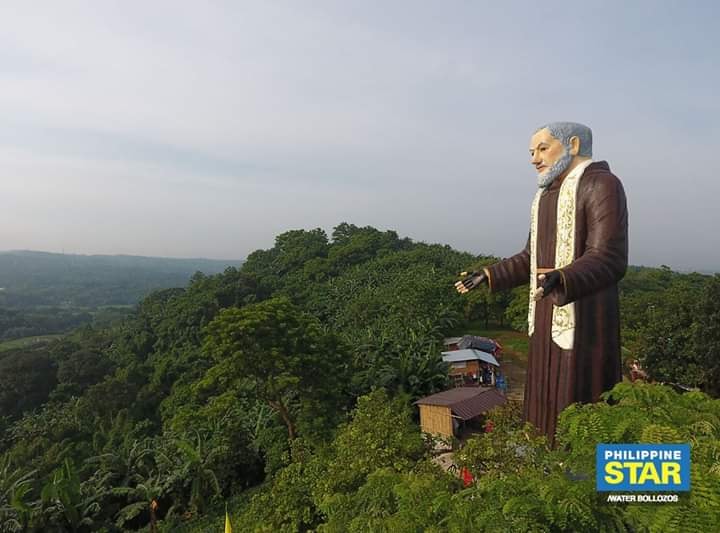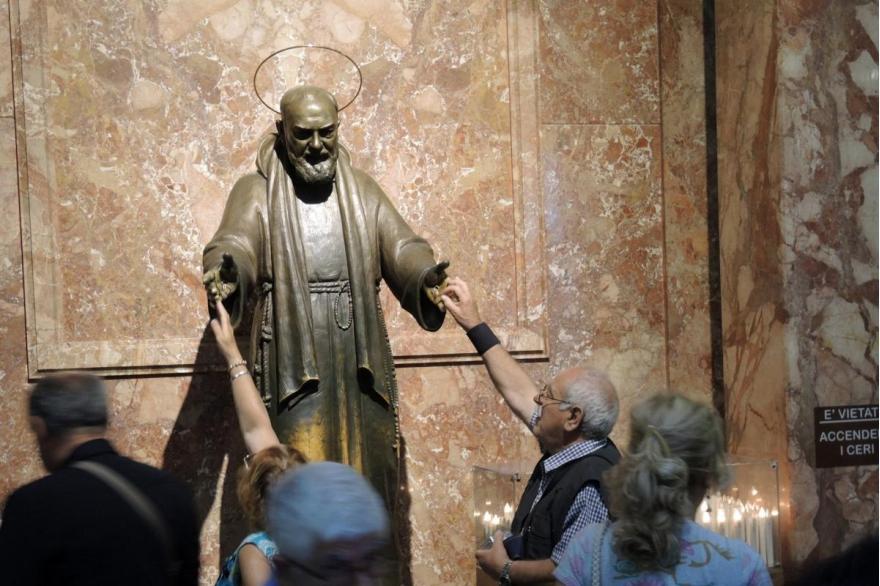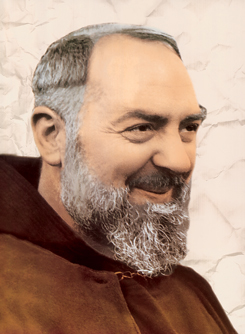Padre Pio
In the 1999 book, Padre Pio: The Wonder Worker, a segment by Irish priest Malachy Gerard Carroll describes the story of Gemma de Giorgi, a Sicilian girl whose blindness was believed to have been cured during a visit to Padre Pio.[81] Gemma, who was brought to San Giovanni Rotondo in 1947 by her grandmother, was born without pupils. During her trip to see Padre Pio, the little girl began to see objects, including a steamboat and the sea.[81][82] Gemma's grandmother did not believe the child had been healed. After Gemma forgot to ask Padre Pio for grace during her confession, her grandmother implored the priest to ask God to restore her sight.[81] Padre Pio told her, "The child must not weep and neither must you for the child sees and you know she sees."[81]



پادره پیو-Padre Pio
His close friend Padre Agostino wrote in 1915, asking specific questions, such as when he first experienced visions, whether he had been granted the stigmata, and whether he felt the pains of the Passion of Christ, namely the crowning of thorns and the scourging. Pio replied that he had been favoured with visions since his novitiate period (1903 to 1904). Although he had been granted the stigmata, he had been so terrified by the phenomenon he begged the Lord to withdraw them. He wrote that he did not wish the pain to be removed, only the visible wounds, since he considered them to be an indescribable and almost unbearable humiliation.[66]

Padre Pio
As a youth, Francesco reported that he had experienced heavenly visions and ecstasies.[3] In 1897, after he had completed three years at the public school, Francesco was said to have been drawn to the life of a friar after listening to a young Capuchin who was in the countryside seeking donations. When Francesco expressed his desire to his parents, they made a trip to Morcone, a community 13 miles (21 km) north of Pietrelcina, to find out if their son was eligible to enter the Order. The friars there informed them that they were interested in accepting Francesco into their community, but he needed to be better educated.[5]

پادره پیو
A Capuchin superior even considered sneaking Padre Pio out in a large barrel on a cart. Obedient, but neither servile nor stupid, the Father Guardian refused this masquerade.

/پیو پیترلچینای قدیس /پادره پیو/پدر پیو /
One of Padre Pio’s missions was to “make the cross of Jesus Christ visible”. Christ took on the human form in order to make the invisible visible. This revelation of God did not end with His Ascension, for upon His return to His Father, Our Lord sent the Spirit of Holiness. Since then, every century has had its share of saints whose perfect lives in imitation of Christ seem to renew His Incarnation. The exterior life of some saints sometimes espouses that of Christ so perfectly that they relive His Passion in their own flesh.
